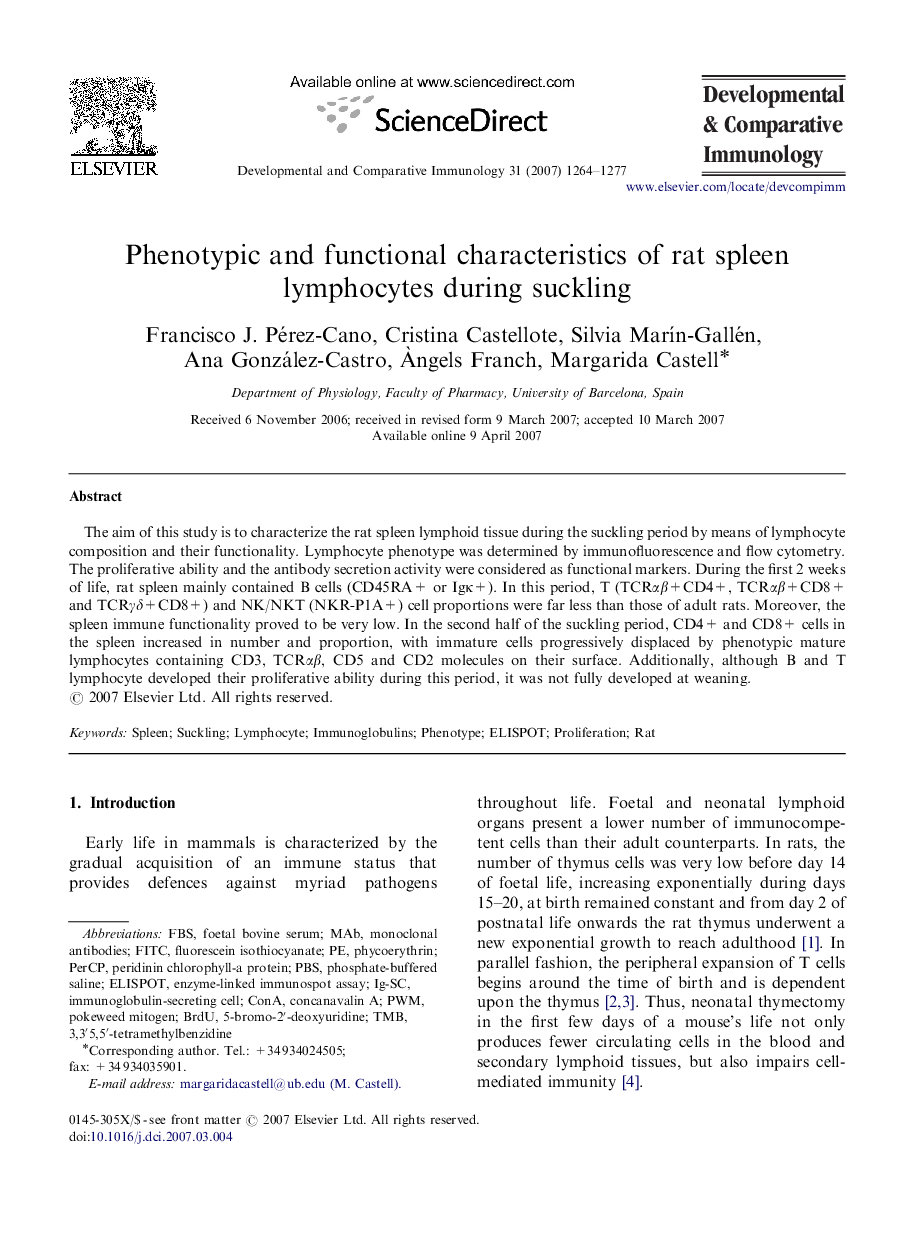| Article ID | Journal | Published Year | Pages | File Type |
|---|---|---|---|---|
| 2429867 | Developmental & Comparative Immunology | 2007 | 14 Pages |
The aim of this study is to characterize the rat spleen lymphoid tissue during the suckling period by means of lymphocyte composition and their functionality. Lymphocyte phenotype was determined by immunofluorescence and flow cytometry. The proliferative ability and the antibody secretion activity were considered as functional markers. During the first 2 weeks of life, rat spleen mainly contained B cells (CD45RA+ or Igκ+). In this period, T (TCRαβ+CD4+, TCRαβ+CD8+ and TCRγδ+CD8+) and NK/NKT (NKR-P1A+) cell proportions were far less than those of adult rats. Moreover, the spleen immune functionality proved to be very low. In the second half of the suckling period, CD4+ and CD8+ cells in the spleen increased in number and proportion, with immature cells progressively displaced by phenotypic mature lymphocytes containing CD3, TCRαβ, CD5 and CD2 molecules on their surface. Additionally, although B and T lymphocyte developed their proliferative ability during this period, it was not fully developed at weaning.
